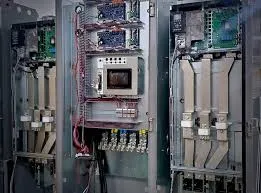The Importance of Automotive Wiring Tape in Vehicle Manufacturing and Maintenance
In the modern automotive industry, the efficiency and reliability of vehicle systems are paramount. One of the unsung heroes in this realm is automotive wiring tape. This specialized tape plays a crucial role in the organization, insulation, and protection of electrical wiring within vehicles. Its significance cannot be overstated, as it directly impacts the safety, functionality, and longevity of automotive electrical systems.
What is Automotive Wiring Tape?
Automotive wiring tape is a type of adhesive tape specifically designed for use in vehicles. Unlike standard electrical tape, which may not withstand the harsh conditions typical in automotive environments, wiring tape is engineered to endure high temperatures, moisture, and exposure to chemicals. It is commonly made from materials such as vinyl, cloth, or a blend of synthetic fibers, all chosen for their durability and performance.
The Functions of Automotive Wiring Tape
1. Insulation One of the primary functions of automotive wiring tape is to provide electrical insulation. It prevents electrical current from leaking between wires, which can lead to short circuits and ultimately, electrical failures. With the complexity of modern vehicles, where hundreds of electrical components are integrated, insulation is critical for safety.
2. Protection Throughout a vehicle's lifespan, wires are subjected to vibrations, movement, and environmental factors. Wiring tape protects wires from abrasion and wear, helping to maintain the integrity of the insulation surrounding them. This is particularly important in areas where wires may rub against metal edges or other potentially damaging surfaces.
3. Organization Wiring tape is instrumental in bundling multiple wires together. This organized approach not only improves the aesthetics of the electrical system but also helps service personnel quickly identify wiring systems during maintenance or repair. A cluttered wiring loom can be a significant challenge, leading to confusion and potential mistakes during inspections.
4. Temperature Resistance Automotive environments are characterized by extreme temperatures. Wiring tape is designed to withstand these variations, ensuring that it maintains its adhesive properties and structural integrity under both hot and cold conditions. This resistance is particularly crucial for components located near engines or other heat sources.
5. Moisture Protection Vehicles are exposed to various weather conditions, including rain, snow, and humidity. Automotive wiring tape provides a barrier against moisture ingress, helping to prevent corrosion and electrical failures. This characteristic adds to the overall longevity of the electrical systems in vehicles.
Types of Automotive Wiring Tape
Automotive wiring tape comes in various types, each suited for specific applications. Some common types include
automotive wiring tape

- Vinyl Electrical Tape This is the most common type of automotive wiring tape
. It is flexible, weather-resistant, and provides excellent insulation.- Cotton Tape Often used in vintage vehicles or classic restorations, cotton tape gives a retro aesthetic while offering decent insulation and protection.
- Heat Shrink Tubing While not technically tape, heat shrink tubing is an essential part of wiring harnesses. It is often used in conjunction with automotive wiring tape to provide additional protection and insulation.
Best Practices for Using Automotive Wiring Tape
To ensure optimal performance of automotive wiring tape, several best practices should be followed
1. Surface Preparation Before applying wiring tape, ensure that the surfaces are clean and dry. This improves the adhesive's ability to bond effectively.
2. Layering When wrapping wires, overlap the tape by at least half of its width. This ensures full coverage and enhances insulation.
3. Proper Tension Apply the tape with consistent tension; too loose can result in the tape unwinding, while too tight can cause damage to the wire beneath.
4. Temperature Consideration Be mindful of the temperature conditions while applying the tape, as extreme temperatures can affect adhesion.
Conclusion
Automotive wiring tape may appear to be a minor component in the grand scheme of vehicle design and maintenance, but its contribution is significant. By providing insulation, protection, organization, and resistance to environmental factors, it ensures that modern vehicles operate safely and efficiently. As vehicles continue to evolve into complex machines with increasing reliance on electronics, the role of automotive wiring tape will only become more vital.
-
XIANGFAN Rubber Tape-Ultimate Solutions for All Your Insulation NeedsNewsJun.24,2025
-
XIANGFAN Rubber Tape-Protection for Industrial and Residential ApplicationsNewsJun.24,2025
-
XIANGFAN Rubber Tape: Superior Safety and Sealing for Demanding EnvironmentsNewsJun.24,2025
-
XIANGFAN Rubber Tape: Reliable Solutions for Every Electrical ChallengeNewsJun.24,2025
-
XIANGFAN Electrical & Industrial Tape: Powering Reliability Across IndustriesNewsJun.24,2025
-
XIANGFAN Electrical & Industrial Tape: Excellence in Every ApplicationNewsJun.24,2025
